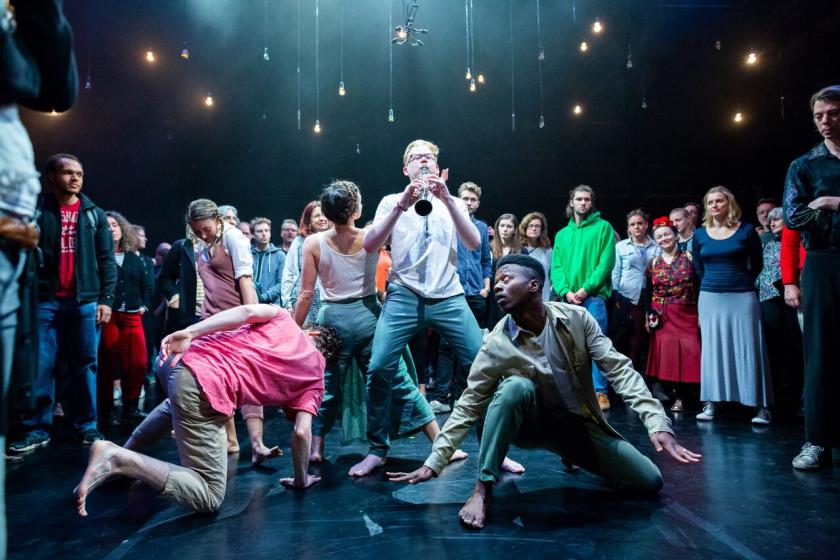Classical music struggles to shrug off the perception of being something of a rarefied world. Or “hermetically sealed” as Charles Hazlewood, founder of the British Paraorchestra describes it. “Classical music has to break out from its ivory tower," says Hazlewood. That tower is exponentially harder to scale for disabled musicians looking to fight their way up, with all the extra logistical and attitudinal barriers they must contend with.
“There’s data on disability in housing, employment, in almost every government department,” says Siggy Patchitt, Head of Bristol Music Trust's National Centre for Inclusive Excellence (NCIE). “But when it comes to representation in the arts, it’s pitiful. Nobody really knows how unrepresentative classical music is for disabled people. But the big industry players don’t want to admit that”. Anecdotally, the signs aren’t particularly positive.
Certainly, disability and the highest levels of musical virtuosity aren’t things you usually hear spoken about together. Yet, this year’s BBC Proms featured its first ever disabled-led ensemble: Bournemouth Symphony Orchestra’s BSO Resound. It is made up of disabled musicians, led by disabled conductor, James Rose, playing songs specially devised by disabled composers. So, are the tides finally shifting?
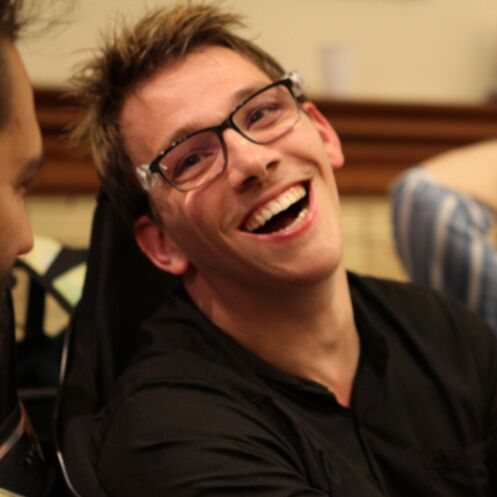 “It’s a start, but I wouldn’t call it a watershed moment,” muses Rose (pictured right by Zeynap Dagli). “I’m hoping that it will improve general attitudes towards disability. But there is still so much to do.” Rose is a conductor involved in the BSO’s Change Makers programme, an Arts Council England initiative aimed at making institutional change by training a cohort of diverse new cultural leaders.
“It’s a start, but I wouldn’t call it a watershed moment,” muses Rose (pictured right by Zeynap Dagli). “I’m hoping that it will improve general attitudes towards disability. But there is still so much to do.” Rose is a conductor involved in the BSO’s Change Makers programme, an Arts Council England initiative aimed at making institutional change by training a cohort of diverse new cultural leaders.
Owing to his cerebral palsy, Rose is unable to conduct with his hands in the conventional way. Instead, he uses a specially adapted baton attached to his head, which he has developed in partnership with Drake Music. This minor physical adjustment is the smallest of the obstacles Rose has had to face on his journey to the Proms. “When I started looking into conducting in 2012 people thought I was going a bit crazy”, he recalls. “Whenever I spoke to people about it you could see their eyes glaze over as if they were thinking ‘ah that’s so sweet’. As if nothing would come out of it. The first three or four years was about selling the idea to people and convincing them I was serious about doing it.”
The year Rose first started taking his own ambitions seriously was also the year of the British Paraorchestra’s first big break. They performed alongside Coldplay as part of the Paralympic closing ceremony. “High performance in disability was in the air in the lead up to 2012, with the Paralympics. That was the light bulb moment when I thought something has to be done,” Hazlewood explains, revisiting the origins of the British Paraorchestra. “It was such a struggle to convince the powers that be. Even liberal minded people, it’s very hard for them to put disability and excellence in the same sentence.” An intervention from Coldplay themselves ensured the British Paraorchestra got their moment.
They haven’t looked backed. High profile performances have followed, including headlining the Park Stage at Glastonbury in 2016. “There were tens of thousands of people standing in rapt silence as we played a very meditative piece – Philip Glass’s Heroes Symphony. That felt like a moment where we were pushing things forward. It’s small steps though.” (Pictured below by Paul Blakemore: the Paraorchestra in 'Anatomy of the Orchestra' at Bristol's Colston Hall). 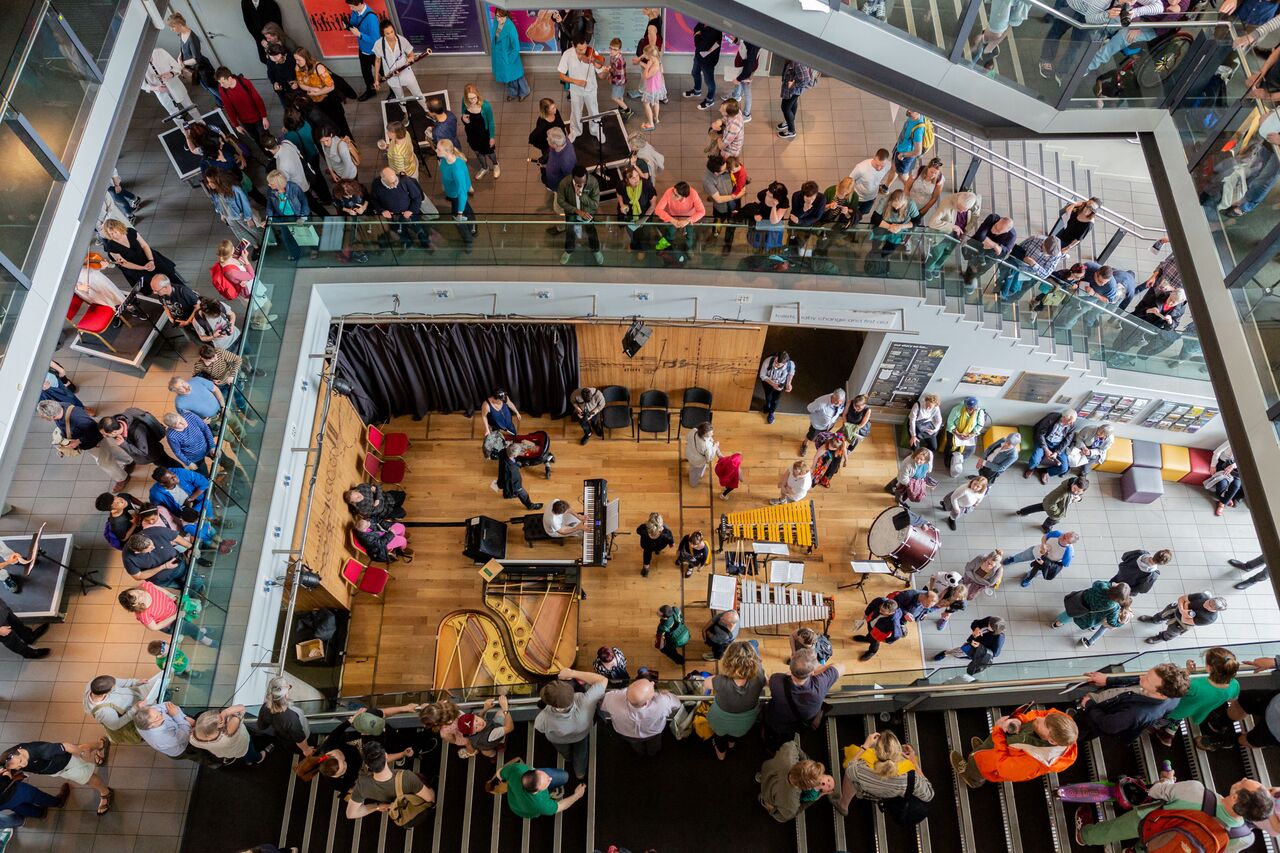 Despite all the accolades, they still encounter the sorts of barriers Rose describes, on a regular basis. “The concert halls who haven’t done due diligence and don’t realise how good the music-making is will farm us off to the education department”, explains Hazlewood. “The subtext of what they’re saying is ‘it will be a lovely feel-good therapy session. But it won’t actually be any good’. I wasn’t put on the planet do to do therapy or build up community groups. I’m here to make world class music. We go around these tropes about therapy, education, lack of quality, no matter how many glitteringly successful or high-profile gigs we do.”
Despite all the accolades, they still encounter the sorts of barriers Rose describes, on a regular basis. “The concert halls who haven’t done due diligence and don’t realise how good the music-making is will farm us off to the education department”, explains Hazlewood. “The subtext of what they’re saying is ‘it will be a lovely feel-good therapy session. But it won’t actually be any good’. I wasn’t put on the planet do to do therapy or build up community groups. I’m here to make world class music. We go around these tropes about therapy, education, lack of quality, no matter how many glitteringly successful or high-profile gigs we do.”
Integration of disabled musicians into world-class orchestras is happening, slowly, in isolated cases. Hazlewood now insists on a number of Paraorchestra players featuring any time his other ‘regular’ orchestra, Army of Generals, performs. “We played the Barbican recently”, says Hazlewood. “A packed house of people witnessing world-class music where a healthy number of the musicians happen to be disabled. There should no longer be a reason for that to be remotely surprising.”
Rose’s Change Makers project is having a much deeper impact at the BSO than simply creating a disabled-led ensemble, as Lisa Tregale, Head of BSO Participate explains: “Change Makers has kickstarted a massive culture change for us as a company. From our internal processes and how we work with musicians. BSO Resound is now part of ensemble portfolio so they come into the mix the same as all our other ensembles. And looking at where it can work strategically, going to local hub partners and saying ‘great you’ve got Open Orchestra, can Resound come in and add value to it’. And it’s another artistic enrichment on our portfolio because it’s a different combination of instruments.”
This growing impetus is, in part, down to a recognition from funders; British Paraorchestra became an Arts Council National Portfolio organisation this year, and Change Makers (ensemble pictured below by Hana Zushi-Rhodes) was a fund set up specifically to support projects like BSO Resound. But change is still too reliant on a handful of innovators. 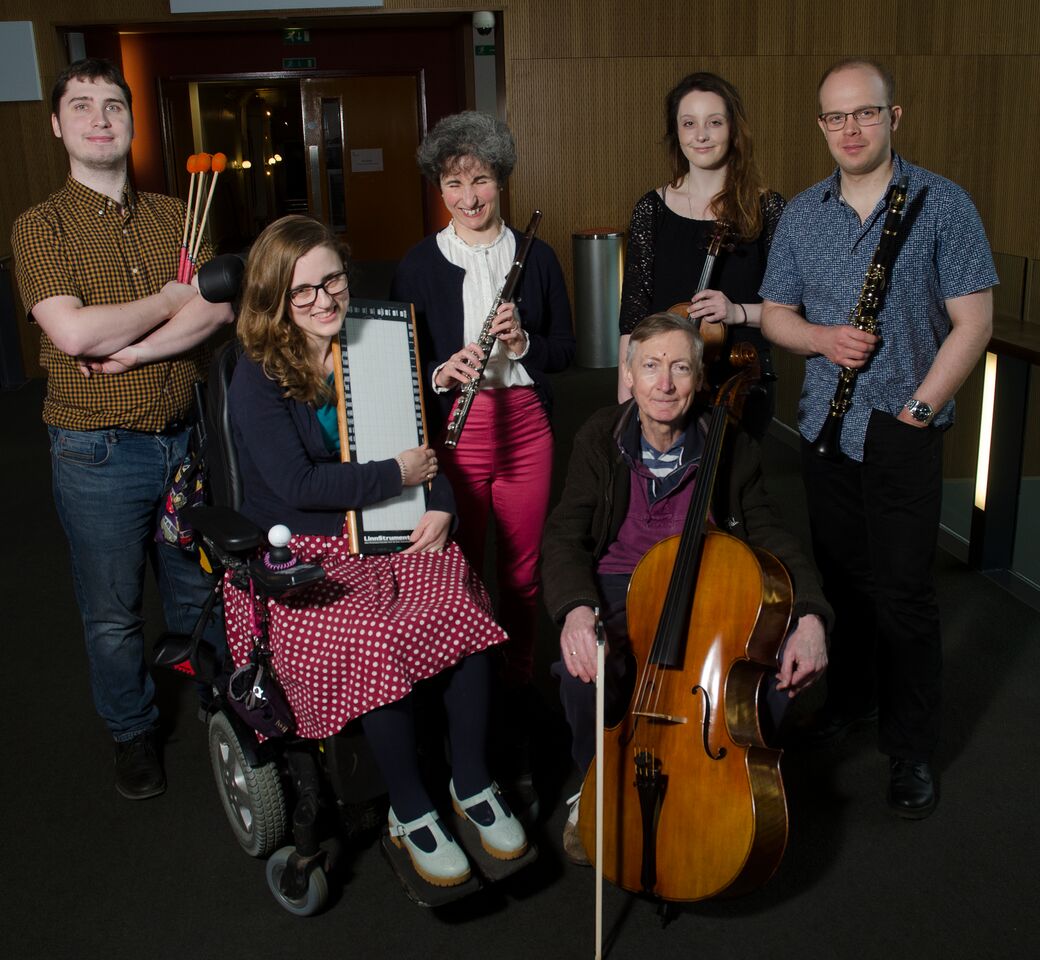 “The places where positive change is happening – BSO, Drake Music, Paraorchestra, OpenUp Music, National Open Youth Orchestra – they are happening because of the drive of individuals,” says Patchitt. “These aren’t a product of the system – these are defying the system”. Bristol Music Trust’s new initiative NCIE, which Patchitt heads up, is looking to join up the dots and roll out change across the industry, including music education and venues, with high-profile partners like Sage Gateshead and the Barbican. The aim is to create career progression routes and remove barriers for those most excluded at all levels of the industry.
“The places where positive change is happening – BSO, Drake Music, Paraorchestra, OpenUp Music, National Open Youth Orchestra – they are happening because of the drive of individuals,” says Patchitt. “These aren’t a product of the system – these are defying the system”. Bristol Music Trust’s new initiative NCIE, which Patchitt heads up, is looking to join up the dots and roll out change across the industry, including music education and venues, with high-profile partners like Sage Gateshead and the Barbican. The aim is to create career progression routes and remove barriers for those most excluded at all levels of the industry.
“We see the role of the NCIE as identifying the trailblazers, working with them and giving them support to help them bring more people over the trail,” says Patchitt. “Then starting to pave them and making more solid foundations. Turning it from a trail into a road. We’re a serious part of the infrastructure and that’s what we can do. We’re not a nimble ground-breaking little organisation, but we are able to support those people that are. It’s about sustainable change.”
For some, like Patchitt, sustainable change means going beyond mere integration of disabled people within the existing structures. This is about the future of our orchestras,” he says. “The disabled musicians they are excluding are the people that are going to unlock the evolution of this whole artform; they’re the fresh blood, the new perspectives, the new instruments, the interesting repertoire. This is the exciting part of music, not the worthy ‘didn’t they do well’ part. Orchestras need to open up – as they did for hundreds of years, until one point they decided that would stop. You can’t have art that’s just a mirror image of privilege.”
Hazlewood concurs. “There’s a bigger part of our ambition with the Paraorchestra which is to redefine what the 21st-century orchestra could and should look like. For me, this isn’t about making music a more level playing field, this is about refining and refreshing the sonic spectrum which orchestras are uniquely able to create.” The Nature of Why, one of Paraorchestra’s latest pieces is a case in point. It was commissioned by Unlimited, the largest funder directed specifically at disabled artists. It wowed audiences at Mayfest and Southbank Centre earlier in the year. The piece is a collaboration with Goldfrapp’s Will Gregory, and it’s all about pushing boundaries. “It’s a whole new way of experiencing an orchestra”, Hazlewood enthuses. “You don’t sit in a seat and watch them on a stage; you’re actually in the action. The orchestra completely surround the audience. There’re dancers, and half the orchestra are choreographed as well. That’s a new way of experiencing music.” 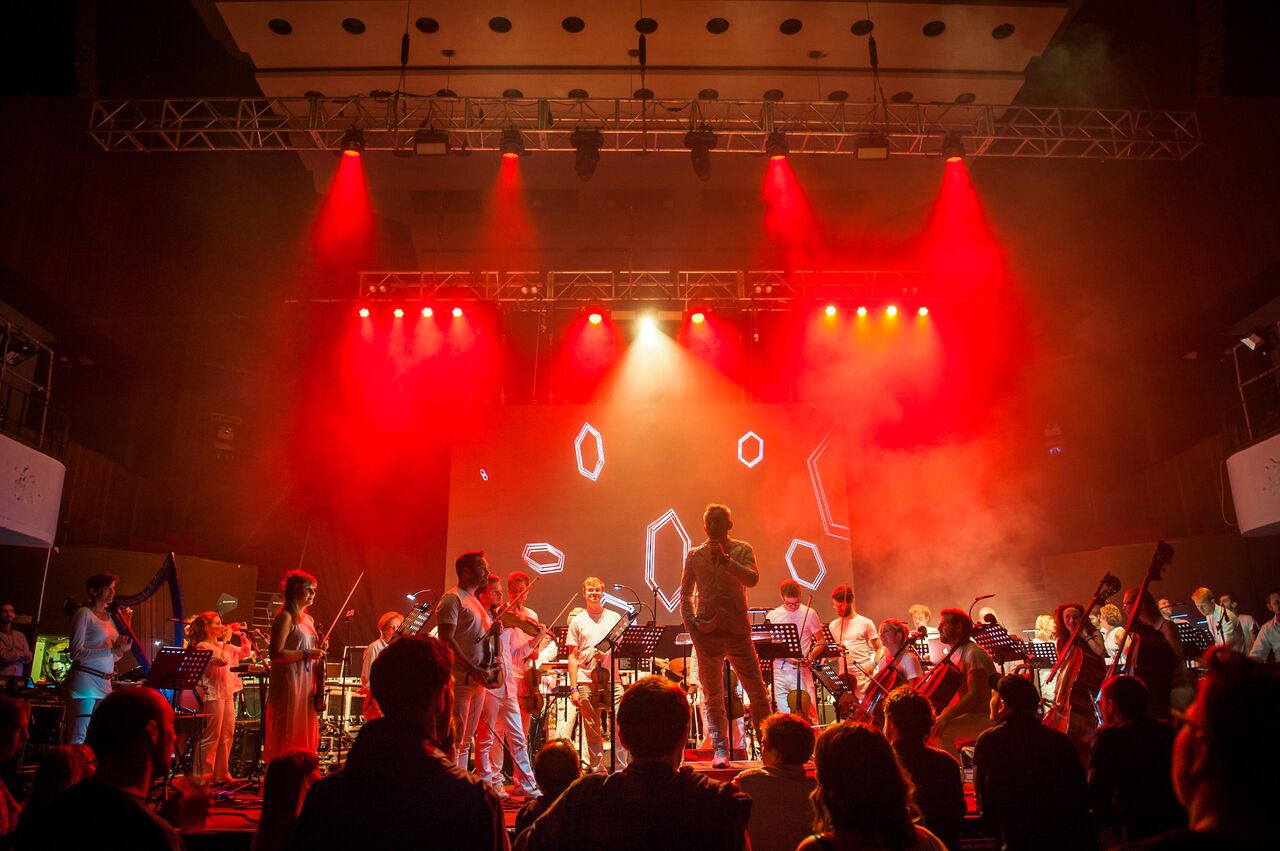 “There is still a long way to go for the industry as a whole, and there’s no singular problem,” says Lloyd Coleman, disabled musician, BBC Proms presenter and Associate Music Director at Paraorchestra and Friends. “Some of the barriers are obvious: many of the older concert halls in the UK are still not fully accessible for musicians who use a wheelchair. If you play music using assistive technology – then there is very little established repertoire for you to play.”
“There is still a long way to go for the industry as a whole, and there’s no singular problem,” says Lloyd Coleman, disabled musician, BBC Proms presenter and Associate Music Director at Paraorchestra and Friends. “Some of the barriers are obvious: many of the older concert halls in the UK are still not fully accessible for musicians who use a wheelchair. If you play music using assistive technology – then there is very little established repertoire for you to play.”
For that to change, many more orchestras must follow the lead of the trailblazers. Tregale has a pretty simple message for any organisation looking to embark on this work.
“No matter how small it is, start by doing something. Do it with an open mind and a philosophy of you won’t have all the answers but you’ll learn as you go along. Ask people. It doesn’t matter if you fail. It’s so easy to not act. You can think, ‘it’s too big’. But small actions all add up and make a massive difference. The traction it’s had already, we couldn’t have imagined it. I’m still pinching myself about the Proms performance, I can barely believe it”.
“The orchestra is a thing of wonder,” says Hazlewood. “But it hasn’t done enough evolving in the last 100 years. It’s time to push things forward.”
- Disability Arts Online
- BSO Resound are performing at Fast Forward Festival, Bristol on 23 November.
- British Paraorchestra are performing at Brighton Dome 17 November, Marble Factory, Bristol 23 November, and at Basingstoke Anvil 24 November.

